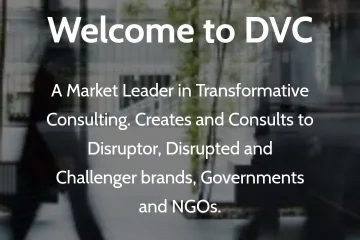Generating future brands with Generative AI involves blending creativity and market insights.
Start by inputting diverse data about current trends, consumer preferences, and cultural shifts. Allow the AI to extrapolate potential themes, aesthetics, and brand values. Refine the output based on human intuition and market viability, ensuring the brand aligns with evolving societal needs.
Regularly update the model with real-time data to stay ahead in the dynamic landscape of branding.
Key to this ,is the use of predictive analytics,sentiment analysis and anomaly detection.
To build future-proof brands, leverage predictive analytics for trend forecasting, sentiment analysis to understand consumer emotions, and anomaly detection for early identification of market shifts.
Analyze social media, customer reviews, and market data to gauge sentiments.
Predictive analytics helps anticipate upcoming trends, while anomaly detection alerts to unexpected deviations.
Using generative AI for anomaly detection involves training a model to understand normal patterns and identify anomalies based on deviations from the learned normalcy. Generative models like Variational Autoencoders (VAEs) or Generative Adversarial Networks (GANs) can be applied for this purpose.
1. Training the Model:
– Train the generative model on a dataset containing normal instances. This helps the model learn the typical patterns and features of the data.
2. Generating Normal Instances:
– Once trained, the generative model can generate new instances of normal data. Anomalies are expected to deviate from these generated normal instances.
3. Anomaly Detection:
– During the detection phase, input data is passed through the generative model. If the generated output closely matches the input, it is considered normal. Deviations indicate potential anomalies.
4. Threshold Setting:
– Establish a threshold for anomaly detection based on the divergence between real and generated data. Instances exceeding this threshold are flagged as anomalies.
5. Iterative Refinement:
– Refine the model iteratively by incorporating feedback on false positives/negatives. Adjust the model or retrain it with new data to enhance accuracy.
6. Consideration of Model Types:
– VAEs are useful for capturing data distribution, while GANs can generate realistic samples. Choose the model based on the characteristics of your data.
7. Feature Engineering:
– Carefully select features that are relevant for anomaly detection. The success of the model depends on the informativeness of the input features.
8. Dynamic Adaptation:
– Regularly update the model to adapt to changes in the data distribution and maintain its effectiveness over time.
Remember, the success of anomaly detection using generative AI relies on the quality and representativeness of the training data, as well as thoughtful parameter tuning and evaluation
Integrate these insights to shape brand strategies, ensuring they resonate with evolving consumer sentiments and adapt swiftly to changes, fostering a brand that stays relevant and responsive to market dynamics.
Future-proofing brands is particularly relevant in industries that experience rapid technological advancements, shifting consumer behaviours, and evolving market landscapes. Examples include technology, healthcare, renewable energy, and sustainable products. These industries require brands to adapt to emerging trends, stay innovative, and demonstrate a commitment to long-term sustainability.
DVC Consultants is currently consulting to Agencio, to build A Global Orchestration Platform that will deliver all these Generative AI technologies to companies worldwide.
About the author
DVC Consultants: Exploring Unknown Unknowns since 1995. Quentin Anderson is Executive Chairman, DVC Consultants, CEO and Co-Founder of BankTotal, and Co-Founder of the social media platform Mifamilias.com. He has decades of experience in advising companies, and for 18 years was a CEO of brand development companies in the WPP group.
q.anderson@dvcconsultants.com
Thought Leadership- Cogitare
Cogitare – Latin for “To Think” – is the collective name for DVC Consultants’ thoughts, insights and perspectives on a broad and eclectic number of subjects. From Brexit to Global Poverty, Islamic Banking to Subsistence Agriculture, and Disruptive Technologies to The World Bank. It reflects the wide range of sectors and issues we consult on. We hope you enjoy reading them.




0 Comments